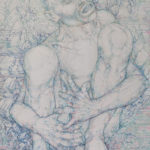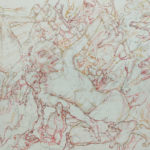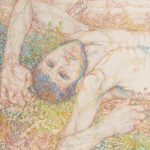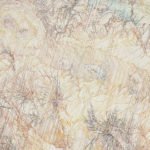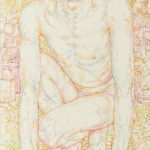(*) From 1 to 10, the “distressing” portraits the artist made during his lockdown at The Mountain Villa. 11-21, previous work. 22-24, pieces at the museum Colección Roberto Polo. Centro de Arte Moderno y Contemporáneo de Castilla-La Mancha. Toledo. Spain.
Once I arrived in the so called Mountain Villa nobody dared to approach me, I felt extremely hazardous and directions were given to me only over the phone. Through long corridors with many rooms, I had to find my way to my number and close the door behind me, a door which only opened from the outside. I had no information how long I was going to stay there and it felt pretty frightening to lose control over your life so suddenly.
During six days they did all kinds of tests: several throat swabs, a blood test, and a CT and X-ray which I had to find again following the instructions given through my phone.
Before I left my apartment, I luckily took some paper and drawing materials, so I spent my time making drawings which to be seen here on the virtual show (*). “Buddha 1” is the drawing I made during my first two days and sleepless nights in The Mountain Villa.
All this happened in the beginning of last March. It has been almost three years now since I followed my partner to China and started to work as an art teacher; first in the most southern city of Guangzhou and now in Suzhou, located in the South Eastern part of China just below the Yangtze river. Suzhou is an ancient city right next to Shanghai, described as “heaven on earth” in the history books, but is now a medium sized city of 10.7 million people. Medium compared to its larger neighbour Shanghai, which is just a 20-minute train ride away and home to approximately 24.3 million people.
—
When we returned to Belgium for the Spring Festival break this year, Mid-January, there was very little talk in the Chinese media about some people being infected by a new virus, possibly transmitted from animals to humans. Two weeks later schools decided not to reopen after the holiday, flights were canceled and I started to continue my art classes online, from 1:00 am to 8:00 am Belgium time, to students who would stay indoors for two months to come.
As I said, in the beginning of March the situation was pretty much in control in the Province of Jiangsu where we live; a province which was not among the badly hit regions of China. My school had plans to reopen towards the end of the month, so we decided to return. My partner who flew over a different country got stuck there and never made it to China, and I arrived here just before China closed its borders for every foreign national. After arrival everyone is obliged to stay in self quarantine at home for two weeks, which is controlled by app’s, QR codes and guards near the entrance of each complex or neighbourhood. Only sometimes electronic police locks on your door.
After eight days I was informed that infected passengers were on my flight to Shanghai, and some of these passengers were seated near me. Police came immediately into my apartment to take me to The Mountain Villa. Only after one week isolated in that silent room, I suddenly got the good news that all my tests were negative: my door was unlocked and I was allowed to leave. I couldn’t believe it. I just could wander out of the facility where no living soul was to be seen, besides a driver and someone from my school near the entrance gate at the end of a lane.
—
Back in my apartment I stayed indoors for another week. It looked surreal to walk on the streets again.
For more than two months the entire Chinese population stayed indoors, the virus was more or less under control, but many Chinese who were still in Europe and others started to return, bringing the virus back in. More and more imported infections were registered, so local people became afraid of foreigners. They believe that we are responsible for bringing the virus back in. I noticed this when I walk outside; some people rush out of my way and it happens that parents grab for their children when I approach. It is definitely a different world here since we left China for the winter break.
Every situation and place has always had an influence on the drawings and paintings. I always enjoyed a lot of drama in my drawings. Earlier plans and preparing sketches for dramatic and apocalyptic compositions like “The crossing of the Red Sea”, “The last days of Pompei”, floods, historical battles, etc.… are drawings I’m working on now during these times of the pandemic.
—
It has been three weeks now since the school reopened. One third of the students and teachers were unable to or did not want to return. Reopening a place with so many people close together is obviously not an easy situation in times of a pandemic which is still far from over.
I plan to teach here until January next year. It was a very interesting experience to work in China, along so many nice and often incredibly talented students, especially after many years of painting and drawing in the isolation of my own studio, apartment, hotel room, car or wherever I was working. But the teaching takes too much time away from my own drawings, which are very detailed and therefore extremely time consuming.
So, I guess I will and want fully to return to the often-lonelier job of a painter.
Biography
Koen de Cock was born in Ghent (Belgium), in 1978. He graduated in sculpture from the Royal Academy of Fine Arts in Antwerp, studied one year at the Academy of Fine Arts in Tianjin (China) and another at the Academy of Fine Arts in Tbilisi (Georgia) as a postgraduate student. In 2013, Shepherds, his first solo exhibition at the Roberto Polo Gallery, stood out for its original theme, both classical and unique, and a watercolour-on-paper technique combining rigour and imagination. He then presented its direct successor, Hermits & Wrestlers, oil paintings on canvas. Both titles allude to his favourite subject, the male nude struggling to merge with exuberant and boundless nature. He admires Dürer, Cranach the Elder and Paulus Pontius, artists influenced by Michelangelo; Pontius represented parts of the body in such an extreme and unreal way that they acquired a life of their own and became a model for later artists. De Cock copied them to understand Pontius’ anatomical transformations; this learning process required technical rigour to imitate the engraved line. His nudes are symbiotically and symbolically integrated into nature, their anatomy dismembered and often struggling violently with each other.
María Cóndor









